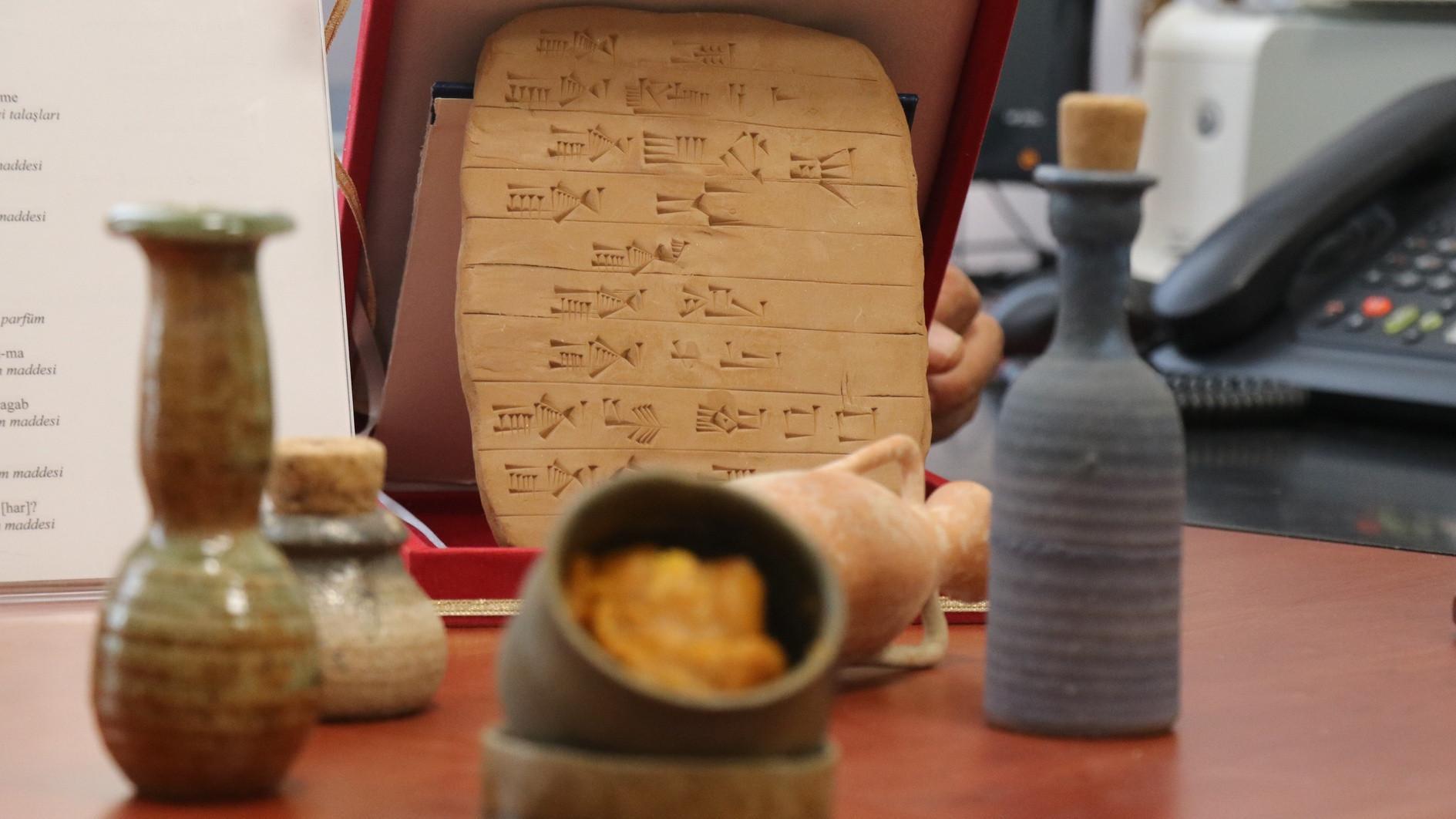
A professor and his student have brought an ancient Sumerian perfume back to life by decoding the recipe from a 4,500-year-old cuneiform tablet discovered in Mesopotamia in 1929 and recreating it by combining the raw materials specified in the formula.
The Sumerian cuneiform tablet found in Mesopotamia in 1929 was first translated by Alfred Pohl in 1937. Today it is kept in the Hilprecht Collection at the University of Jena in Germany.
Professor Yusuf Kılıç, the head of the Department of Ancient Ages and History at the Faculty of Humanities and Social Sciences, and Meryem Karakurt Göksel, who has been his student for five years, noticed the information on the tablet while working on the book of scents. Göksel, a doctoral student who has had experience in making scents and perfumes for a long time, made the perfume from a mixture of some of the raw materials mentioned on the tablet.
As it is a recreation of a 4500-year-old perfume, Kılıç and Göksel named the perfume “The Sun of Civilization: The Rebirth of a 4,500-Year-Old Fragrance.” They mentioned that they are seeking assistance as they work toward mass-producing this fragrance.
Kılıç stated that they identified 17 different substances in the Sumerian tablet they examined, combining some of these to create the solid perfume, and subsequently developed its liquid version.
Kılıç stated that according to the documents, it is the oldest perfume in the world and that it was frequently used by the Sumerian Queen Puabi and the Sumerian people.
“We know that this perfume was used especially by women at that time because, in the excavations carried out in the tomb of the Sumerian Queen Puabi, various make-up materials, as well as various scent bottles, were found. We also know that it was used by men, too. Of course, they usually used scents in rituals and also used them as gifts for the dead so that they could be used in the afterlife. If we bring it to life again, I believe that it will create economic value as well as historical and cultural value,” he said.
Kılıç also explained how the Sumerian people used solid perfume, saying, “Around 4,500 years ago, the Sumerian people applied it to the vein part of their forearm as well as two veins under their ears. Especially when you apply it to the vein, the scent of the perfume lasts longer.”
Stating that the perfume contains scents such as rose, saffron, musk and amber, Göksal said, “Although time and place change, the scent and the raw materials that create the scent never change. As a result of the studies, we have learned that the people of that period were also very well aware of its areas of use. The raw materials it contains include rose, saffron, musk, amber and similar scents that can be called luxurious today."